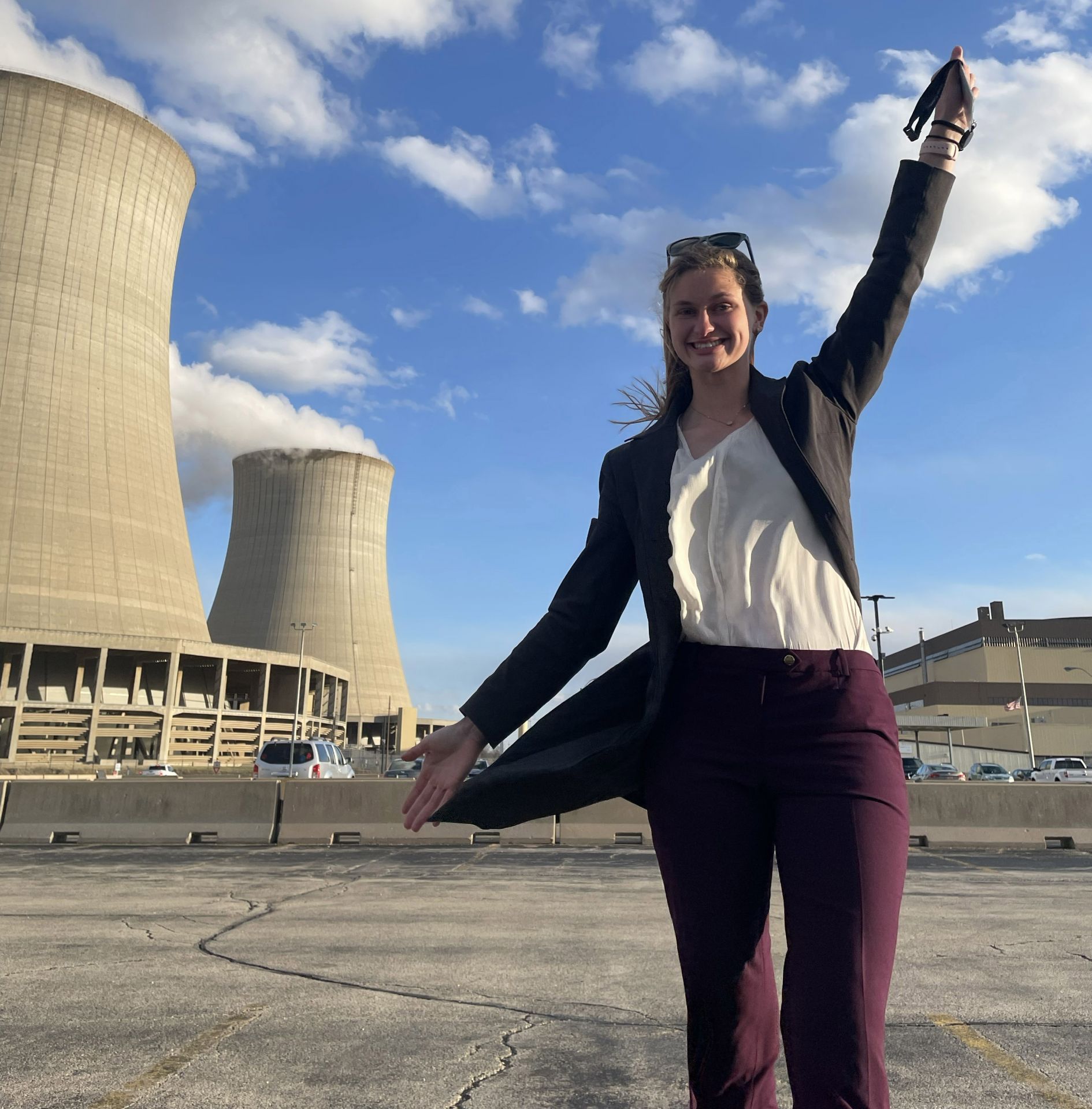Belgium's Doel nuclear power plant. (Photo: N. Hippert/IAEA)
Unit 3 at the Doel nuclear power plant has become Belgium’s first reactor to be permanently shuttered, in keeping with that nation’s nuclear phaseout policy. The 1,006-MWe pressurized water reactor, which began commercial operation in October 1982, was removed from service last Friday at 9:31 p.m. (local time).
Belgium’s nuclear reactor fleet now consists of six operating units: Doel-1, -2, and -4 and Tihange-1, -2, and -3. Next on the retirement list is Tihange-2, scheduled to be shut down in February 2023.
(Image: Ana Kova /USFusionEnergy.org)
The Department of Energy announced up to $50 million for a new milestone-based fusion energy development program on September 22. The funding opportunity announcement is open to for-profit companies—possibly teamed with national laboratories, universities, and others—that are prepared to meet major technical and commercialization milestones leading to a pilot fusion power plant design.
The Estonian flag. (Image: WikiCommons)
Moving forward with its plan for small modular reactor deployment in Estonia, Fermi Energia has issued tenders to three SMR firms—GE Hitachi (GEH), NuScale Power, and Rolls-Royce, developers of the BWRX-300, NuScale Power Module, and Rolls-Royce SMR, respectively.
The Estevan region (Image: SaskPower)
As part of its planning and regulatory activities to potentially build small modular reactors (SMRs) in currently nuclear-powerless Saskatchewan, Canadian utility SaskPower has selected the province’s Estevan and Elbow regions for further study. (In 2018, SaskPower joined the Canadian government, three other provinces, and four other Canadian utilities to participate in the development of A Call to Action: A Canadian Roadmap for Small Modular Reactors.)
The Effluent Management Facility, part of the Waste Treatment and Immobilization Plant at the Hanford Site. (Photo: Bechtel National)
This spring, the U.S. Government Accountability Office (GAO) released an insightful report reviewing and summarizing the status and performance of the largest projects and operations within the Department of Energy’s Office of Environmental Management (EM), which is responsible for the cleanup of hazardous and radioactive waste at sites and facilities that have been contaminated from decades of nuclear weapons production and nuclear energy research.
Graphic rendition of the Aurora microreactor. (Image: Oklo Inc.)
Some eight months after the Nuclear Regulatory Commission denied Oklo Inc.’s license application to build and operate its Aurora microreactor in Idaho, the company has returned to the regulatory fray. On Wednesday, Oklo announced that it has submitted to the NRC a licensing project plan (LPP) outlining its proposed engagement to support future Aurora licensing activities.
The Prairie Island nuclear power plant. (Photo: Xcel Energy)
Clean energy technology firm Bloom Energy has announced plans to install a 240-kW electrolyzer at Xcel Energy’s Prairie Island plant in Red Wing, Minn., to demonstrate the benefits of producing hydrogen with nuclear power. (One of Xcel’s two nuclear plants, Prairie Island houses twin 550-MWe pressurized water reactors.)
Spain’s nuclear power plants are to use Holtec’s HI-STORM spent fuel storage technology. (Image: Holtec)
Holtec International announced that its flagship HI-STORM Multi-Purpose Canister (MPC) spent fuel storage technology was selected by Spain’s national company Enresa for a fleet of six nuclear power reactors at four plant sites in the country. Equipos Nucleares S.A. (ENSA), a Cantabria-based manufacturer of equipment for the Spanish nuclear fleet, was named a consortium partner with Holtec in the order, which was conducted under European Union procurement rules.
Highlights from Chairman Hanson’s visit with the ANS student section at UPRM. (Photos: NRC/Twitter)
The American Nuclear Society student section at the University of Puerto Rico—Mayagüez (UPRM) recently welcomed Christopher T. Hanson, chairman of the U.S. Nuclear Regulatory Commission. While at UPRM, Hanson met with graduate students conducting nuclear-related research, as well as with deans, professors, and other university officials. He also delivered a speech, “Preparing to Regulate the Nuclear Technology of the Future.”



 The Department of Energy’s Office of Environmental Management (EM) released its
The Department of Energy’s Office of Environmental Management (EM) released its 





 Released this week in the lead-up to November’s COP27 event in Egypt is a report from the United Nations Economic Commission for Europe,
Released this week in the lead-up to November’s COP27 event in Egypt is a report from the United Nations Economic Commission for Europe, 




